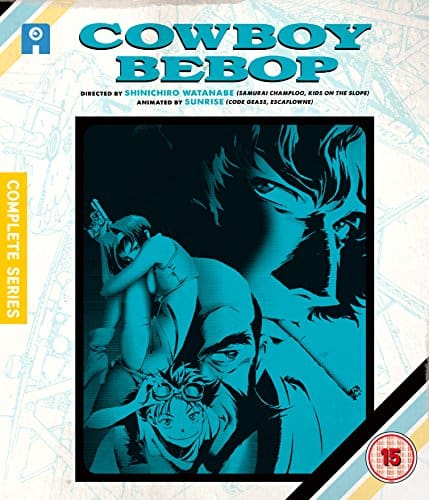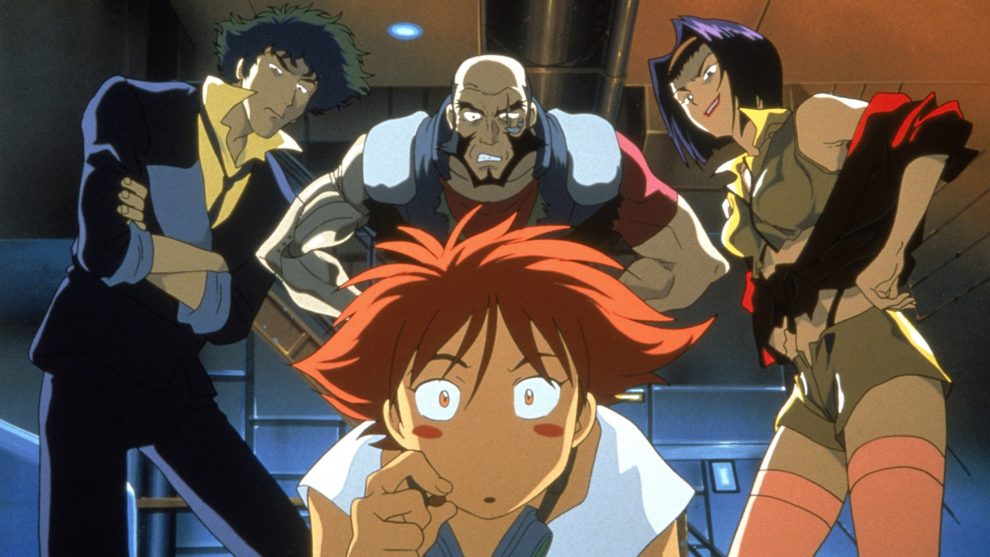Considered by many as one of the greatest anime of all time and labelled as a gateway to the West series for the medium as a whole, “Cowboy Bepop” remains one of the coolest titles ever to come from the Japanese entertainment industry, with the passing of time not having touched its quality the least. Just a few days after the live-action series is live on Netflix, it would be interesting to check once more, all these traits that have led the title to the aforementioned laurels.
Buy This Title
on Amazon

In 2071, roughly fifty years after an accident with a hyperspace gateway which made the Earth almost uninhabitable, humanity has colonized most of the rocky planets and moons of the Solar System. Amid a rising crime rate, the Inter Solar System Police (ISSP) has set up a legalized contract system, in which registered bounty hunters (also referred to as “Cowboys”) chase criminals and bring them in alive in return for a reward. As the title begins, we are introduced to two such cowboys, Spike Siegel, an exiled former hitman of the criminal Red Dragon Syndicate, and Jet Black, a former ISSP officer.who operate through the latter's spaceship, Bebop. Although both are quite skilled, their money garnering abilities is questionable, to say the least, to the point that they are frequently broke, barely having something to eat, as the chef of the group, Jet, frequently complains.
The first episodes follow the “villain of the week” approach, but their true purpose is to introduce the rest of the key members that eventually enter the group, which include Faye Valentine, a sultry amnesiac con artist with a gambling problem, Edward, a rather agile, eccentric girl who is extremely skilled in hacking, and Ein, a genetically-engineered Pembroke Welsh Corgi with human-like intelligence. The episodic approach continues throughout the series, but the main arcs, revolving around the past of the protagonists, also come to the fore eventually, with Faye and Spike's past taking centerplace, followed by Jet's reasons for leaving ISSP.
Shinichiro Watanabe directs a series whose rather multilayered narrative consists of a series of elements that follow both entertainment and deeply contextual paths.The first aspect is based on three axes. The use of humour, which mostly focuses on the fact that, despite their permeating coolness, all characters act as buffoons on occasion, which also leads them into being permanently broke. The excellent soundtrack by Yoko Kanno, which follows western, jazz, rock and opera paths in one of the best works ever to appear in an anime series. The third one is the action, which combines all the aforementioned, while including martial arts, gunfights in cowboy style, and spaceship battles in the most impressive fashion.
The second aspect derives mostly from the past of the main characters, and the way it affects their present, in an approach that results in a number of sociophilosophical comments along with some notions of romance. In that fashion, apart from the aforementioned connection between past and present, Watanabe also deals with existentialism, loneliness, and the meaning of friendship and love, with the dynamics among Spike, Faye, and the femme fatale from his past that shaped him intently, Julia, being one of the most interesting features here, particularly in the way the relationship of the first two, is implied and lingering, rather than fully blooming in any given time. Eventually, concepts like revenge and the ability to let go, family, and the way it is shaped among people who do not share blood ties also enter the narrative, adding even more depth.
Through all the aforementioned, Watanabe manages to analyze his characters to the fullest, making this lot of losers and anti-heroes appear as likeable as possible, through a realistic approach that highlights their faults as the main source of their appeal, in another of the series's impressive traits which also adds a dramatic element to the title.
Toshihiro Kawamoto's character design is excellent, with the protagonists being quite different in the presentation of both their faces and hair (which follow western profiles) and body. In that fashion, Spike is tall and thin, Faye model-like, Jet bulky, Edward a tomboy made of rubber and Ein adorably plump. The animation by Sunrise occasionally shows its age, but in general, complements the narrative quite nicely, both in the serious and the cartoonish occasions, while a number of action scenes are still impressive.
23 years after its initial release, “Cowboy Bepop” remains a masterpiece of the category, a triumph of coolness and a testament to the narrative depth anime can occasionally show.

















Next time watch Gungrave! It beats Cowboy Bebop easily
I disagree completely